The Albanese government’s target of building 1.2 million homes over five years depends on constructing large volumes of high-rise apartments in established suburbs.
On Tuesday, the Australian Bureau of Statistics (ABS) released dwelling approvals data for August, which showed that apartment approvals have collapsed, scuttling the government’s target.
In trend terms, only 14,300 dwelling approvals were approved in August, which is 5,700 (28.5%) below the 20,000 monthly run rate required to meet the target.
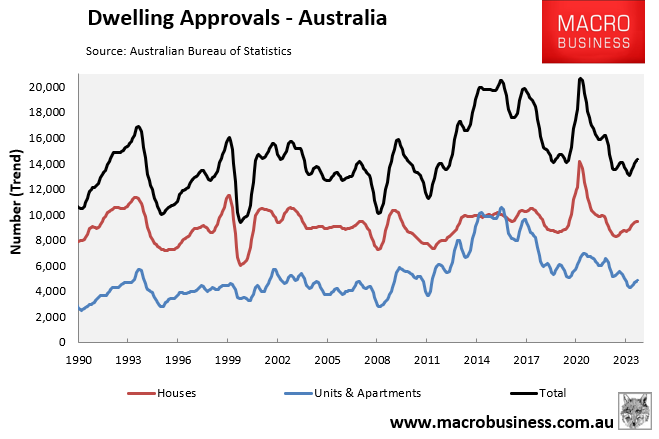
In the year to August, 166,200 dwellings were approved, which is 73,800 (31%) below the 240,000 annual run rate required to meet Labor’s target.
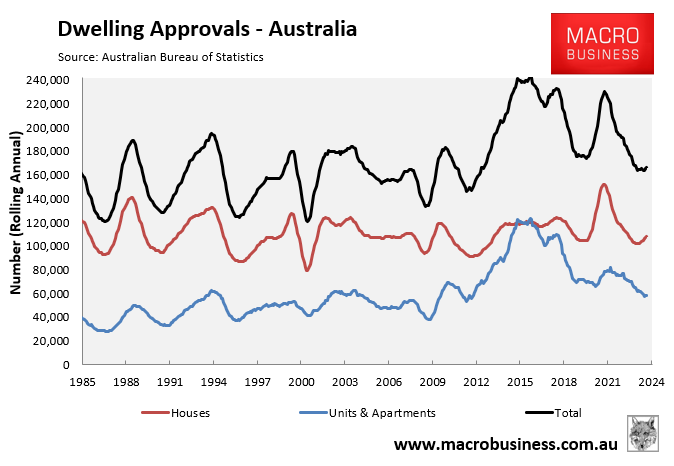
The unit & apartment segment, where approvals are tracking around 12-year lows, has led the annual decline.
The following more granular chart plots approvals in annual terms across the various components.
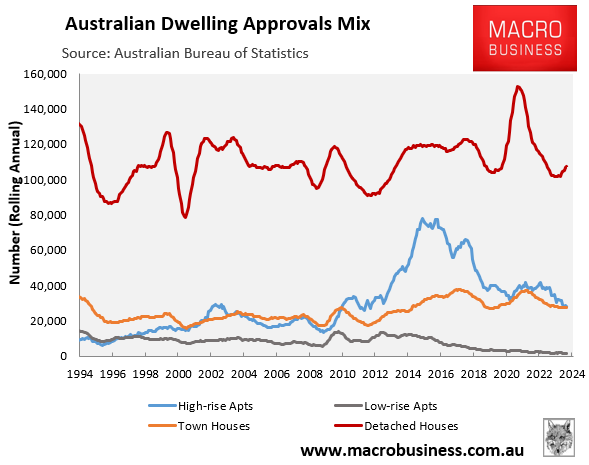
High-rise apartment approvals collapsed to only 28,400 in the year to August, down 64% from the peak.
There were only 1,830 low rise apartment approvals in the year to August, down 87% from the peak.

Finally, the next chart plots high-rise approvals across the major states:
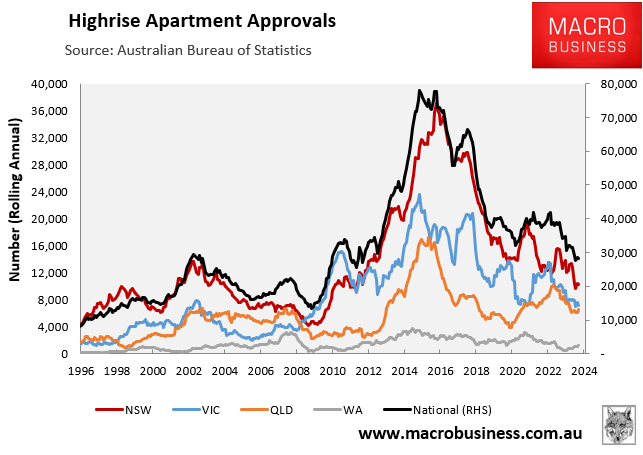
Annual high-rise approvals have collapsed as follows across the three largest East Coast states:
- NSW down 72% from peak
- VIC down 69% from peak
- QLD down 62% from peak
There is no sugar coating this data. Due to rising costs, widespread labour shortages, and declining builder profitability, Australian housing construction is collapsing.
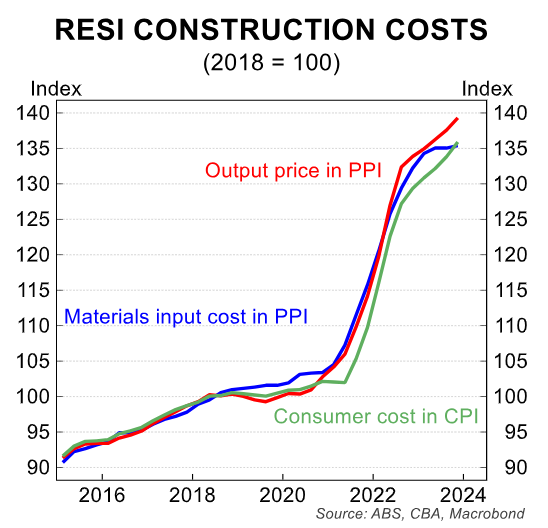
In turn, the average value of apartment approvals in Australia has risen strongly, mostly reflecting cost inflation.
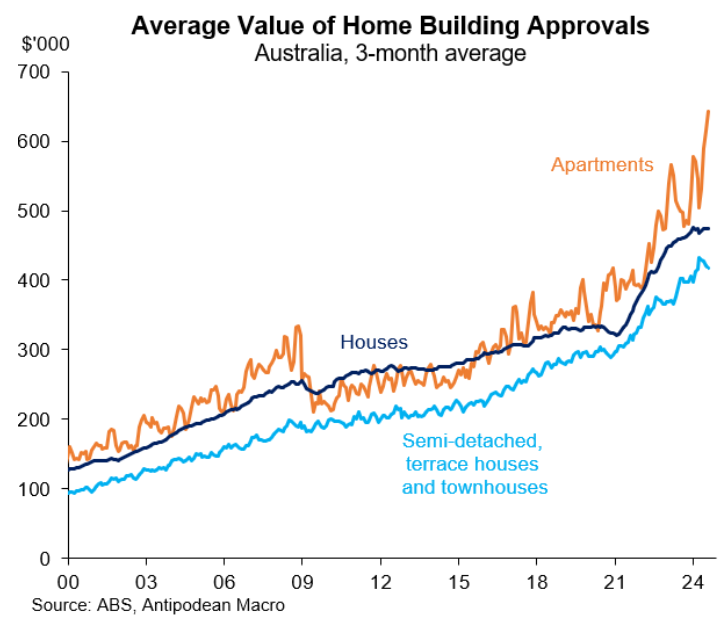
The upshot is that the Albanese government’s target of building 1.2 million homes over five years has a snowflake’s chance in hell of being met.
The only realistic solution to Australia’s housing shortage is to slash net overseas migration to a level that is below the nation’s ability to build housing and infrastructure.

